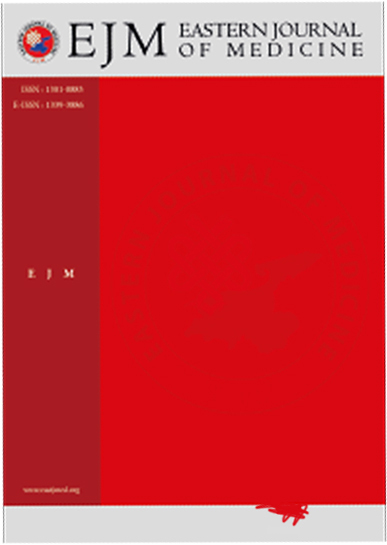The effect of hyperuricemia on acute renal failure due to sepsis in elderly intensive care patients and the relationship with cancer
Hasan Açık1, Gülen Açık2, Kağan Gökçe31Istanbul Okan University, Faculty Of Medicine, Department Of Of Internal Medicine, İstanbul, Türkiye2Istanbul Okan University, Faculty Of Medicine, Department Of Anesthesiology And Reanimation, İstanbul, Türkiye
3Istanbul Okan University, Faculty Of Medicine, Department Of General Surgery, Surgical Oncology, İstanbul, Türkiye
INTRODUCTION: The aim of our study is to assess hyperuricemia as an early biomarker of sepsis-related acute kidney injury and mortality in elderly cancer patients.
METHODS: This retrospective study was conducted on patients with sepsis, who were hospitalized in the intensive care unit (ICU), based on the quick Sequential Organ Failure Assessment (qSOFA) score. Patients were categorized into two groups depending on their uric acid levels. The first group had a serum uric acid level of ≥7 mg/dL, whereas the second group had a serum uric acid level of <7 mg/dL.
RESULTS: The median age was 73.5 years, ranging from 65 to 82 years. Among the 106 patients, 35 patients had hyperuricemia. Acute kidney injury was developed at a statistically significantly higher rate in the group of patients with hyperuricemia than in the group of patients with normal uric acid levels (p=0.019). However, mortality rates were found to be similar in both groups. According to the statistics, the group with hyperuricemia had a significantly longer length of stay in the ICU (P=0.019). Multiple models revealed that having malignancy (p=0.003; OR: 5.771) and a high qSOFA score (p=0.0001; OR: 5.535) were risk factors that increased the risk of mortality.
DISCUSSION AND CONCLUSION: The rates of AKI development were found to be statistically significantly higher in the hyperuricemic group. The risk of mortality in elderly hyperuricemic cancer patients hospitalized in the ICU is higher than in non-hyperuricemic patients. Hyperuricemia can be used as one of the early biomarkers of sepsis-related AKI.
Manuscript Language: English














